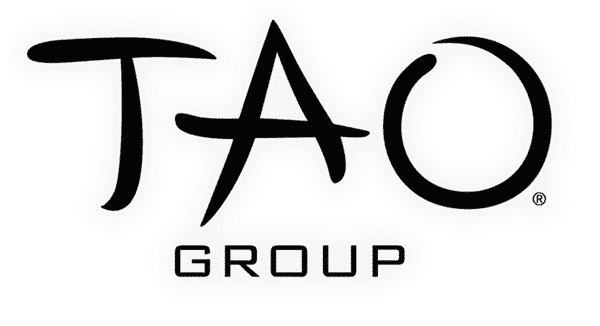Unlocking “the future of social media algorithms: what brands need to know” is no small feat, but understanding the mechanics behind them can revolutionize your brand’s online presence. With algorithms dictating the content users see on their feeds, staying ahead of the curve is vital for any brand wishing to thrive in the social media landscape. In this blog post, we delve into the evolution of social media algorithms, explore their future trends, and uncover strategies to help you adapt your social media strategy for success.
Key Takeaways
Social media algorithms have evolved, requiring users and businesses to adapt their strategies accordingly.
AI-driven algorithms enable personalization benefits for both users and brands, higher user engagement, improved satisfaction and loyalty.
Successful social media strategy requires creating high quality content, leveraging video content & building authentic connections with audience.
The Evolution of Social Media Algorithms

Gone are the days when social media feeds were simply a chronological list of posts. The emergence of AI-driven social media algorithms has dramatically transformed the social media landscape, prioritizing content based on user behavior and preferences. This shift has impacted how social media algorithms work, from simply displaying the most recent posts to providing users with relevant content tailored to their interests. The fact that social media algorithms exist has made it essential for users and businesses to adapt their strategies accordingly.
As a result, social media marketers have had to refine their social media marketing strategy to resonate with their target audience and maintain their social media presence. Grasping the subtle details of social media algorithms allows marketers to traverse the dynamic landscape effectively, keeping their content both visible and engaging for users.
From Chronological to AI-Driven
The transition from chronological feeds to AI-driven algorithms has been a game-changer for social media platforms. These complex algorithms analyze user behavior and preferences, allowing content to be ranked and displayed based on its relevance to individual users. As AI and machine learning advancements continue, social media algorithms have become increasingly sophisticated, enabling platforms to provide more tailored experiences for their users.
One noteworthy example of AI-driven algorithms reshaping the social media landscape is TikTok. The platform’s algorithm has had a significant impact on other social media platforms, leading them to alter their content suggestion strategies and prioritize personalized content. Consequently, social media marketers are required to modify their strategies, crafting content that is attractive to their target audience and fares well within these advanced algorithms.
The Rise of Personalization
Personalization has become a key component of social media algorithms. By analyzing user data and behavior, algorithms can deliver personalized content that is more relevant and engaging to users. This has led to improved user engagement, increased time spent on platforms, and ultimately, higher user satisfaction and loyalty.
For brands and advertisers, personalization presents a valuable opportunity. Delivering customized marketing messages allows brands to target their desired audience more effectively, ultimately enhancing the success of their marketing efforts.
As algorithms continue to evolve, the importance of personalization in social media marketing will only grow, making it crucial for marketers to adapt their strategies accordingly.
The Future of Social Media Algorithms: Key Trends and Predictions

As we venture further into the future, advancements in AI and machine learning will continue to revolutionize social media algorithms, leading to even more personalized and user-centric experiences. Brands and content creators must be prepared to face the challenges that come with these ever-evolving algorithms, such as maintaining visibility and engagement, all while adapting their strategies to stay ahead of the game.
To successfully navigate these algorithm changes, brands must adopt new strategies for creating high-quality, engaging content, leveraging video content, and building authentic connections with their audience. This approach ensures their content remains visible and engaging, leading to a solid social media presence and improved performance within social media algorithms.
AI and Machine Learning Advancements
The role of AI and machine learning in optimizing social media algorithms cannot be overstated. These technologies are used to analyze vast amounts of user data, categorize posts, and generate tailored content recommendations based on user behavior and preferences. As AI and machine learning technologies continue to advance, social media algorithms will become even more adept at understanding user behavior and preferences, leading to increasingly personalized content recommendations.
Keeping abreast of advancements in AI and machine learning is vital for social media marketers to maintain the visibility and engagement of their content within these complex algorithms. By understanding how AI and machine learning contribute to content recommendation, marketers can better tailor their strategies to create content that resonates with their target audience and performs well within social media algorithms.
Increased Personalization and User-Centric Approach
The growing focus on personalization and user-centric approaches in social media algorithms has led to:
More tailored content recommendations for users
Increased personalization benefits for both users and brands
Higher user engagement
Improved satisfaction and loyalty
More effective targeting of desired audiences
For social media marketers, embracing the user-centric approach means creating content that not only appeals to their target audience but also aligns with the preferences and interests of individual social media users. This action ensures their content continues to be visible and engaging within the constantly evolving social media algorithms, leading to a robust social media presence and improved performance within these algorithms.
Challenges for Brands and Content Creators
Navigating the ever-changing landscape of social media algorithms presents several challenges for brands and content creators. Some of these challenges include:
Producing content that is both engaging and relevant to their target audience
Remaining visible within the ever-evolving algorithms
Being mindful of platform-specific algorithm differences, as these nuances can greatly impact their reach and engagement.
To overcome these challenges, brands and content creators must be proactive in adapting their strategies to stay abreast of the latest algorithm changes. By doing so, they can:
Maintain visibility and engagement
Ensure their content remains relevant and engaging for their target audience
Ultimately lead to a stronger social media presence and better performance within social media algorithms.
Adapting Your Social Media Strategy for Algorithm Changes

Successfully adapting your social media strategy to algorithm changes can make all the difference in maintaining a strong online presence. Grasping the subtle details of social media algorithms and implementing strategies like crafting high-quality, engaging content, utilizing video content, and forming genuine connections with your audience allows you to smoothly navigate these changes and sustain success in your marketing endeavors.
In the following sections, we’ll explore these strategies in detail, providing you with actionable insights to help you optimize your social media strategy and thrive in the ever-changing world of social media algorithms.
Creating High-Quality, Engaging Content

Producing high-quality, engaging content is a crucial component of any successful social media strategy. Content that resonates with your target audience not only captures their attention, but also performs well within social media algorithms, ensuring your brand remains visible and engaging on various platforms.
Understanding the needs and interests of your target audience is key to creating content that resonates with them and performs well within social media algorithms. Additionally, experimenting with different types of content and analyzing engagement metrics can help you gain valuable insights into what works best for your audience, enabling you to refine your strategy and maximize the potential of your content.
Leveraging Video Content
Video content has become increasingly popular in recent years, with social media algorithms often favoring this format over text-based posts. As a result, incorporating video into your marketing strategy can provide a significant boost to your visibility and engagement within social media algorithms.
To maximize the potential of video content, it’s important to create compelling, engaging videos that resonate with your target audience. Experimenting with different formats, such as live streams, short-form videos, and animated content, can help you identify what types of video content your audience responds best to, enabling you to tailor your strategy accordingly.
Building Authentic Connections and Encouraging Interaction
Fostering genuine connections with your audience and encouraging interaction is key to boosting visibility and engagement within social media algorithms. By engaging in relevant dialogue, responding to feedback, and producing content that resonates with your target audience, you can build authentic connections that ultimately lead to a stronger social media presence.
To encourage interaction with your content, consider posing questions, initiating polls, and leveraging interactive features such as stories and live streams. This approach not only engages your audience but also signals valuable content to the algorithms, helping maintain the visibility and engagement of your content across various social media platforms.
Navigating Platform-Specific Algorithm Differences
Each social media platform has its own unique algorithm that determines how content is ranked and displayed to users. Understanding the specific details of each platform’s algorithm and adapting strategies to fit is vital for social media marketers.
In the following sections, we’ll explore the unique algorithm differences across most social media platforms like Meta (Facebook and Instagram), Twitter, and LinkedIn, providing you with actionable insights to help you optimize your content for success on these social platforms.
Meta (Facebook and Instagram)
Meta, the parent company of Facebook and Instagram, has placed a significant emphasis on AI-driven algorithms to enhance content recommendations and user engagement on their platforms. To succeed on Meta-owned platforms, it’s important to optimize your content for their specific algorithms.
Facebook, for example, prioritizes native video content and meaningful conversations over transactions on social media apps, making it crucial to focus on creating engaging videos and fostering authentic connections with your audience.
Instagram, on the other hand, has evolved from a chronological algorithm to one that considers key factors such as user interactions, content format, and source. By understanding these nuances and tailoring your strategy accordingly, you can ensure your content performs well within Meta’s algorithms and achieves maximum visibility and engagement.
Twitter’s algorithm utilizes a logistic regression model to rank tweets on a user’s timeline based on relevance, considering factors like the user’s interests, the type of content, the time of day, and the user’s engagement with the tweet. To tailor your content strategy for maximum visibility and engagement on Twitter, it’s important to create high-quality content, leverage video content, build authentic connections, and encourage interaction.
By understanding the specific algorithm factors at play on Twitter and optimizing your content accordingly, you can maximize your reach and engagement on this platform, ultimately leading to a stronger social media presence.
LinkedIn’s algorithm emphasizes:
Professional connections
Delivering relevant content from colleagues, peers, industry experts, and brands
Factors such as likes, comments, and overall engagement when recommending content.
To create content that performs well within LinkedIn’s professional networking environment, it’s important to focus on producing content that is relevant to your target audience and encourages meaningful engagement. Understanding LinkedIn’s unique algorithm and adjusting your content strategy accordingly can help maximize your content’s visibility and engagement within this professional networking platform.
Case Studies: Brands Successfully Adapting to Algorithm Changes

Several brands have successfully adapted to algorithm changes and achieved continued success in their marketing efforts. Companies like:
Amazon
Starbucks
Nike
BMW
Have leveraged AI, personalization, and customer-centric strategies to effectively adjust their algorithms and enhance their marketing efforts.
Adopting these successful strategies and achieving social media success enabled these brands to reach more customers, enhance engagement, and boost sales. Their successes serve as a testament to the power of adapting your social media strategy to the ever-evolving landscape of social media algorithms.
Summary
In conclusion, understanding and adapting to the ever-evolving landscape of social media algorithms is crucial for any brand hoping to thrive in today’s digital world. By employing strategies such as creating high-quality, engaging content, leveraging video content, and building authentic connections, you can navigate these algorithm changes with ease and achieve continued success in your marketing efforts. As algorithms continue to evolve, staying informed and refining your social media strategy is key to ensuring your brand remains visible, engaging, and relevant to your target audience.
Frequently Asked Questions
What you need to know about social media algorithms?
Social media algorithms are used by platforms to prioritize the content users see in their feeds, taking into account factors such as past behavior, content relevance, and post popularity.
What should brands be doing on social media?
Brands should ensure a consistent brand across multiple social media networks by covering their basics, extending their visual branding, developing marketing personas, establishing a brand voice and tone, and creating multiple accounts for different areas of focus.
How do social media algorithms affect businesses?
Social media algorithms prioritize content based on user preferences, interests, and past engagement. Businesses can leverage these changes by creating a mix of content types to increase their chances of being seen by their audience.
This is transforming the advertising industry in many important ways.
What is the most powerful social media marketing strategy in 2023?
Social media live streaming and short-form video advertising offer the most powerful marketing strategies for 2023, due to their ROI potential and availability across all major platforms.
What is the role of AI and machine learning in social media algorithms?
AI and machine learning are integral components of social media algorithms, allowing for analysis of data and classification of posts to provide more tailored content recommendations.




































